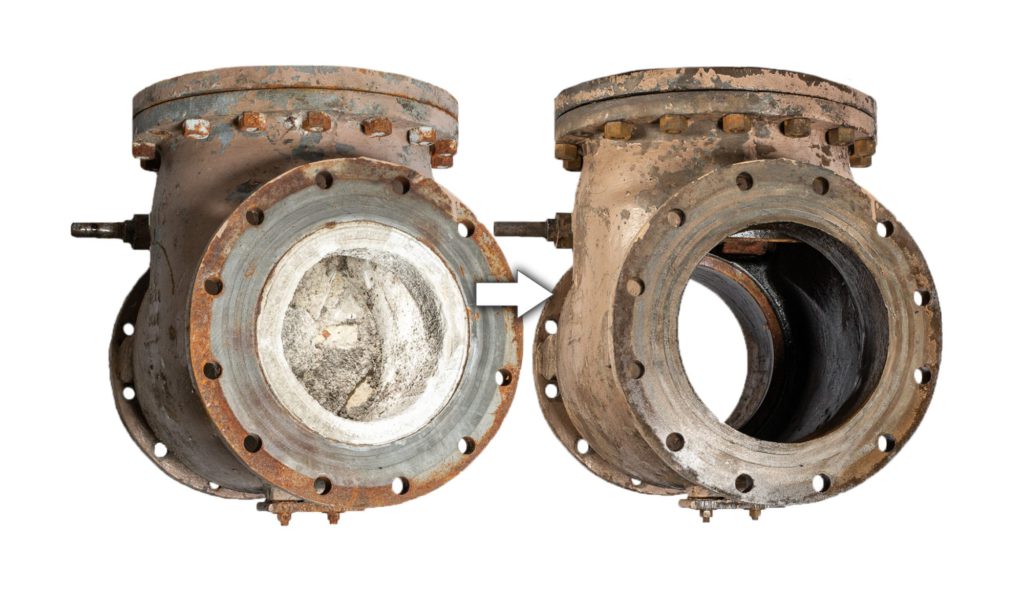Hydrochloric acid (HCl) is one of the strong and widely used mineral acids in various industries. Due to its unique properties, this acid plays an important role in cleaning processes and removing deposits from industrial and domestic equipment. In this article, we will examine the properties, applications and environmental impacts of hydrochloric acid in removing deposits.
Properties of Hydrochloric Acid (HCl)
Hydrochloric acid has become one of the most widely used mineral acids due to its special properties. Some of these properties include:
- High dissolving power : Hydrochloric acid has a very high dissolving power that can dissolve various deposits, including calcium carbonate, rust, and other mineral compounds.
- Gas-producing ability : When reacting with some inorganic compounds, hydrochloric acid can produce gases such as chlorine (Cl₂), which helps with cleaning.
- Corrosiveness : Hydrochloric acid is highly corrosive and can damage metals and various materials. For this reason, care and caution must be taken when using this acid.
- pH adjustment capability : Hydrochloric acid can be used as a pH adjusting agent in chemical processes.
Applications of hydrochloric acid in removing deposits
1. Oil and gas industries
In the oil and gas industry, hydrochloric acid is used to remove various deposits and contaminants from pipes, tanks, and various equipment. This acid can dissolve calcium and magnesium deposits and remove them from the surface of equipment. Hydrochloric acid also helps improve the efficiency of equipment and increase its useful life.
2. Water purification
In water treatment processes, hydrochloric acid is used as a descaling agent to remove calcium and magnesium carbonate deposits from surfaces and treatment equipment. This acid can help improve the efficiency of treatment processes and reduce maintenance costs. Hydrochloric acid can also help clean water treatment systems due to its high corrosive properties.
3. Production of detergent products
Hydrochloric acid is also used in the production of detergents and cleaning products. This acid can help increase the effectiveness of detergent products and improve the cleaning process. Detergent products containing hydrochloric acid can remove various deposits and contaminants from surfaces and help in effective cleaning.
4. Petrochemicals
In the petrochemical industry, hydrochloric acid is used to clean equipment and remove chemical deposits from various systems. This acid can help improve the efficiency of chemical processes and reduce maintenance costs. Hydrochloric acid is also used as a pH adjusting agent in some chemical processes.
5. Electricity generation
In the power generation industry, hydrochloric acid is used to descale cooling systems and various equipment. This acid can help improve the efficiency of cooling systems and extend the useful life of equipment. Hydrochloric acid can also help clean cooling systems due to its high corrosive properties.

Environmental effects of hydrochloric acid
The use of hydrochloric acid can have various environmental impacts. Some of these impacts include:
1. Water pollution
Improper use of hydrochloric acid can lead to contamination of water resources. This acid can penetrate into surface and groundwater and cause various types of pollution. Therefore, the correct use and proper management of hydrochloric acid is of great importance.
2. Dangers to wildlife
Hydrochloric acid can also be dangerous to wildlife. If this acid is released into the environment, it can harm aquatic life and other living organisms. Therefore, the release of hydrochloric acid into the environment should be avoided.
3. Dangers to humans
Improper use of hydrochloric acid can also pose risks to humans. The acid can damage the skin, eyes, and respiratory tract. Therefore, it is essential to use appropriate protective equipment and follow safety guidelines.
Methods for managing and reducing the environmental impacts of hydrochloric acid
Various methods can be used to reduce the environmental impacts of hydrochloric acid. Some of these methods include:
1. Proper waste management
Proper management of hydrochloric acid waste can help reduce the environmental impact of this acid. This includes proper collection, storage, and disposal of hydrochloric acid waste.
2. Use of protective equipment
Wearing appropriate protective equipment, such as gloves, goggles, and respirators, can help reduce the risks associated with using hydrochloric acid. Employees should also receive training on the safe use of this acid.
3. Use of alternative materials
In some cases, alternatives with less environmental impact can be used instead of hydrochloric acid. These can include organic acids or less corrosive chemicals.

Conclusion
Hydrochloric acid (HCl) plays an important role in removing deposits and cleaning industrial and domestic equipment due to its special properties. However, improper use of this acid can lead to environmental and human impacts. To reduce these impacts, it is necessary to properly manage waste, use appropriate protective equipment, and use alternative materials with less environmental impact.
Benefits and uses of hydrochloric acid
The use of hydrochloric acid has many advantages, including increasing the efficiency of cleaning and descaling processes, increasing the useful life of equipment, and reducing maintenance costs. This acid can be used in various industries, including oil and gas, petrochemicals, water treatment, detergent production, and power generation.
Final conclusion
Hydrochloric acid, as a widely used chemical, plays an important role in improving the efficiency and maintenance of industrial and household equipment. However, improper use of this acid can lead to environmental and human impacts. Therefore, proper waste management, the use of appropriate protective equipment, and the use of alternative materials with less environmental impacts are of great importance. By following these tips, you can enjoy the benefits of hydrochloric acid while reducing its environmental impacts.